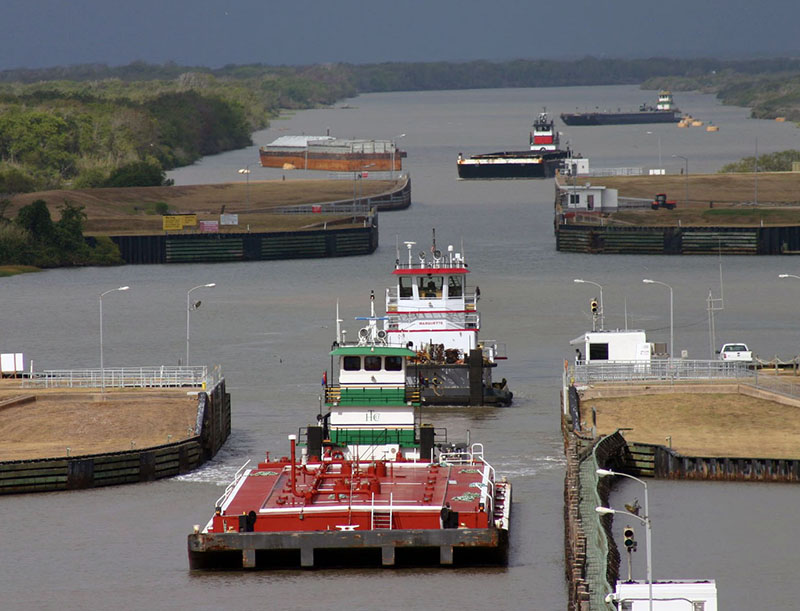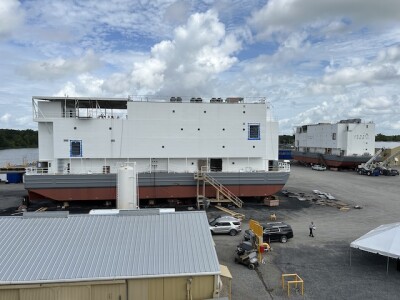Advocates for the inland waterways praised President Trump’s June 7 infrastructure speech on the banks of the Ohio River, promising to move past decades of neglect in maintaining and updating the system’s locks and dams.
The Cincinnati event, staged at a riverside marina with an Ingram Barge Co. towboat and coal barges in the river behind Trump, and an audience populated with union labor and hardhats, was well received by the industry.
“Our country has not seen this kind of leadership on infrastructure since President Franklin D. Roosevelt’s 1930s New Deal to build our locks and dams, or since the 1950s by President Dwight D. Eisenhower to construct the National Defense and Interstate Highway system,” the Waterways Council Inc. said in a statement, after the industry group played a key role in organizing the event. “Today, Presidential leadership was demonstrated once again by emphasizing the importance of the inland waterways transportation system and this critical national infrastructure with the backdrop of the river itself.”
Trump struck the right notes, hitting key statistics on the critical role of river transport in the economy: how 60% of U.S. grain exports go on barges to the Gulf Coast, why every nine barges of cargo equal 1,000 fewer tractor-trailers rumbling the nation’s highways.
But as Waterways Council president Mike Toohey said after the speech, “the devil is in the details.”
Indeed. That $1 trillion-for-infrastructure promise is still out there, but the actual federal contribution would be 20%, or $200 billion, with the rest from state and local governments and private investment. The administration apparently wants to double the river industry’s contribution too, from the $100 million a year that now comes from the inland fuel tax.
The White House offered some details about how it plans to divide the funds in a fact sheet released a day after the event in Cincinnati. On June 20, Treasury Secretary Steven Mnuchin said that the success of Trump’s infrastructure plan would lean heavily on foreign investment, The Hill reported.
“Working with foreign investors is going to be a critical part of any plan we put forward,” Mnuchin said at the SelectUSA Investment Summit in Washington. "Public-private partnerships are crucial to ensuring that the American taxpayer does not bear the full cost of any proposed program."
As always, industry advocates say it is up to them to work with Congress going forward. Two weeks before Trump’s speech, they met in an infrastructure roundtable discussion hosted by Rep. Garret Graves, R-La., chairman of the House Water Resources and Environment Subcommittee.
Graves talked of the need to streamline the U.S. Army Corps of Engineers processes, comparing the pace of its projects to Panama’s 10-year widening of its canal. Trump’s speech in Cincinnati hit a similar theme when he said ”America built the Golden Gate Bridge in just four years, and the Hoover Dam in five years.”
But as those smart-alecks at the Washington Post pointed out, years of planning and support work went into those projects before pouring concrete. With a 12,000-mile inland waterway system and structures on average a half-century old, it’s time for a new master plan that will last beyond a single presidential administration.





